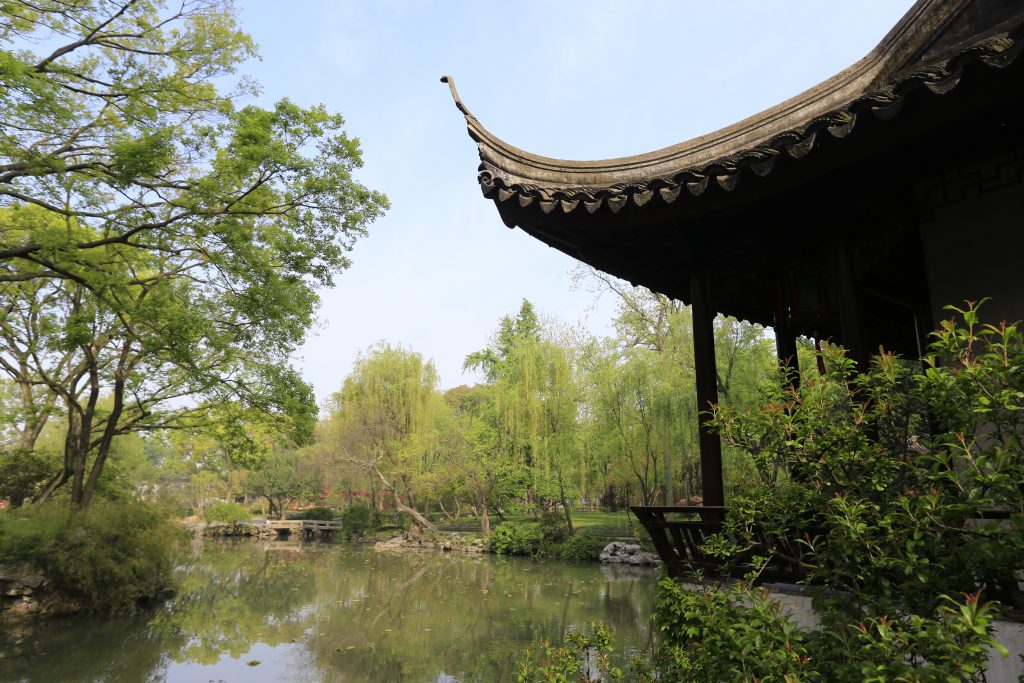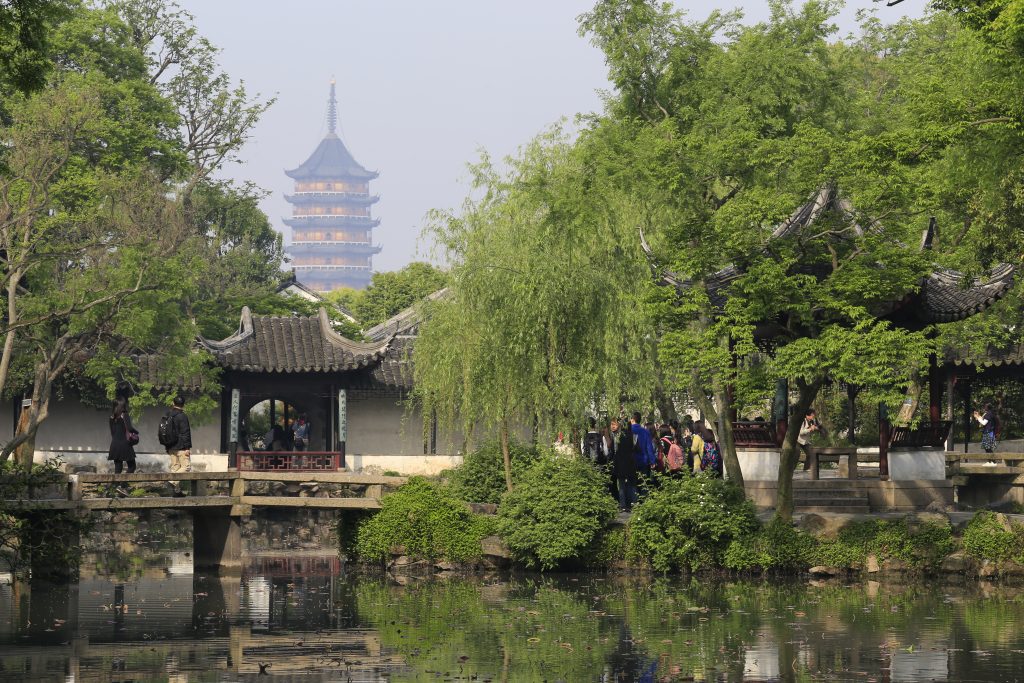The Garden of the Inept Administrator, also called Humble Administrator’s Garden, (Zhuozheng Yuan) was built on the site of an ancient temple in Suzhou by the censor Wang Xianchen (act. ca. 1500–1535). In 1527, after an unhappy stay in Beijing, the artist Wen Zhengming returned to Suzhou, where he was given a studio in the garden. In an album of 1535, Wen painted thirty-one views of the site, each accompanied by a poem and a descriptive note. Sixteen years later, at the age of eighty-one, he painted this second album of eight views. The garden still exists in Suzhou, but centuries of renovations make it difficult to identify Wen’s scenes.
El Jardín del Humilde Administrador (Zhuozheng Yuan) fue construido en el solar de un antiguo templo en Suzhou por el censor Wang Xianchen (ley c. 1500–1535). En 1527, tras una estancia infeliz en Beijing, el artista Wen Zhengming regresó a Suzhou, donde le dieron un estudio en dicho jardín. En 1535, Wen pintó treinta y una vistas del sitio, cada una acompañada por un poema y una nota descriptiva. Dieciséis años después, a la edad de ochenta y un años, pintó este segundo álbum de ocho reproducciones. El jardín aún existe construido en Suzhou, aunque desgraciadamente tras siglos de renovaciones se hace difícil identificar las escenas de Wen.
In these works Wen achieved the ideal integration of the three separate arts of poetry, calligraphy, and painting (the so-called three perfections). With characteristic restraint, he chose to use only ink, but, aided by the poems, the quiet and exquisite images easily evoke that magical, autumnal moment in the garden.
En estas obras, Wen consiguió una integración ideal de las tres artes principales en China: poesía, caligrafía y pintura (llamadas las tres perfecciones). Con su moderación característica, optó por usar solo tinta en sus dibujos y se ayudó mediante poemas de transmitir las imágenes tranquilas y exquisitas que evocan fácilmente ese momento mágico y otoñal dentro del jardín.
Text by Metropolitan Art Museum
Leaf AA (10 columns in semi-cursive script):
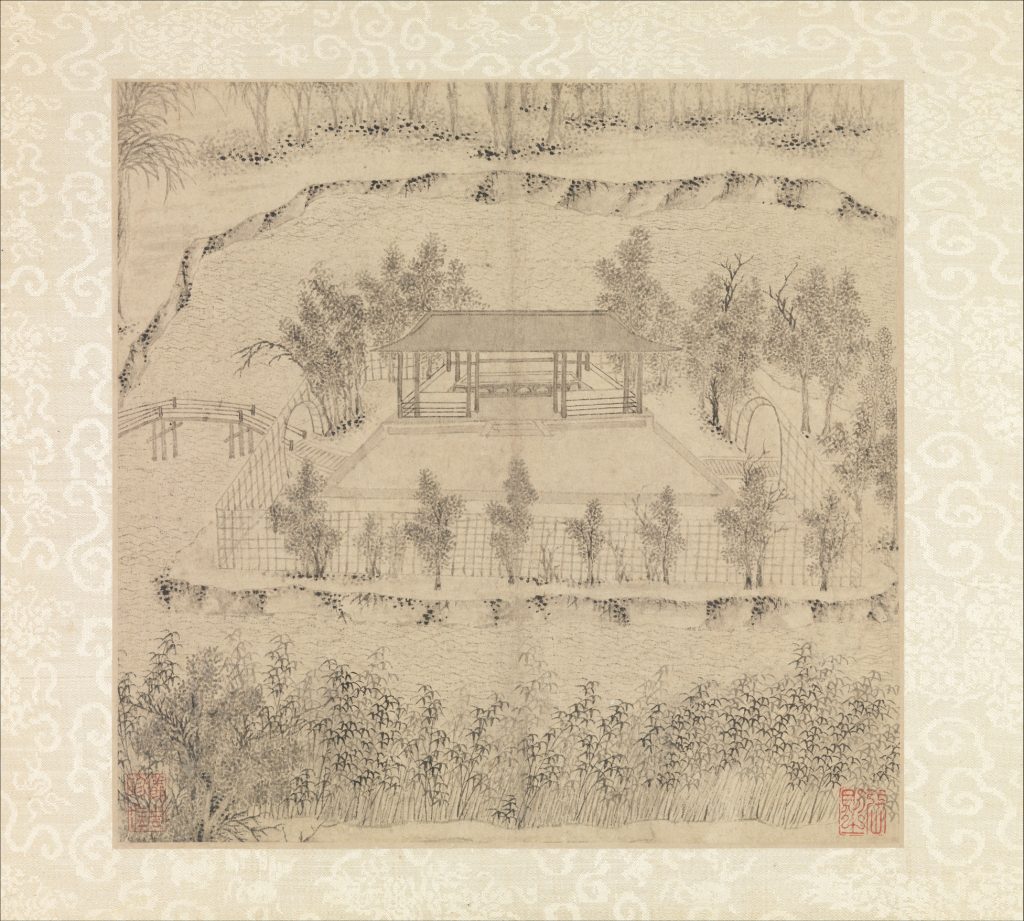
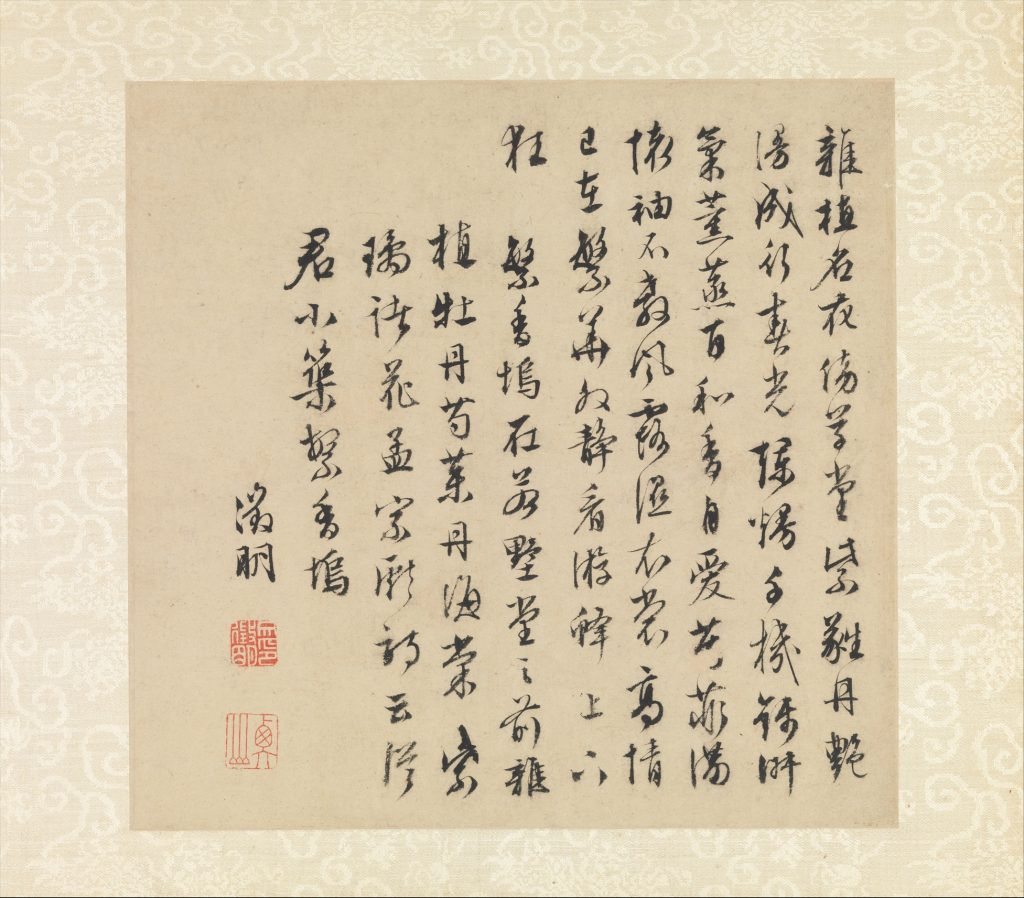
Various kinds of flowers are planted next to the thatched hall,
Purple luxuriance and red beauty in random array.
The spring radiance and brilliance embroiders them with a thousand artifices;
In the fine air and scented mist a hundred fragrances mix.
I love the smells that fill my bosom and sleeves;
I do not let the wind and dew wet my clothes.
My thoughts fly high beyond the flowery world.
Quietly, I watch the bees dance up and down.
The Bank of Many Fragrances is in front of the Rustic Hall. It is planted with a mixture of various kinds of peonies, begonias, wisteria, and other flowers. Meng Zongxian (1163 jinshi degree) said in a poem, “Next to your cottage is a bank of many fragrances.” Zhengming
Leaf BB (10 columns in semi-cursive script):
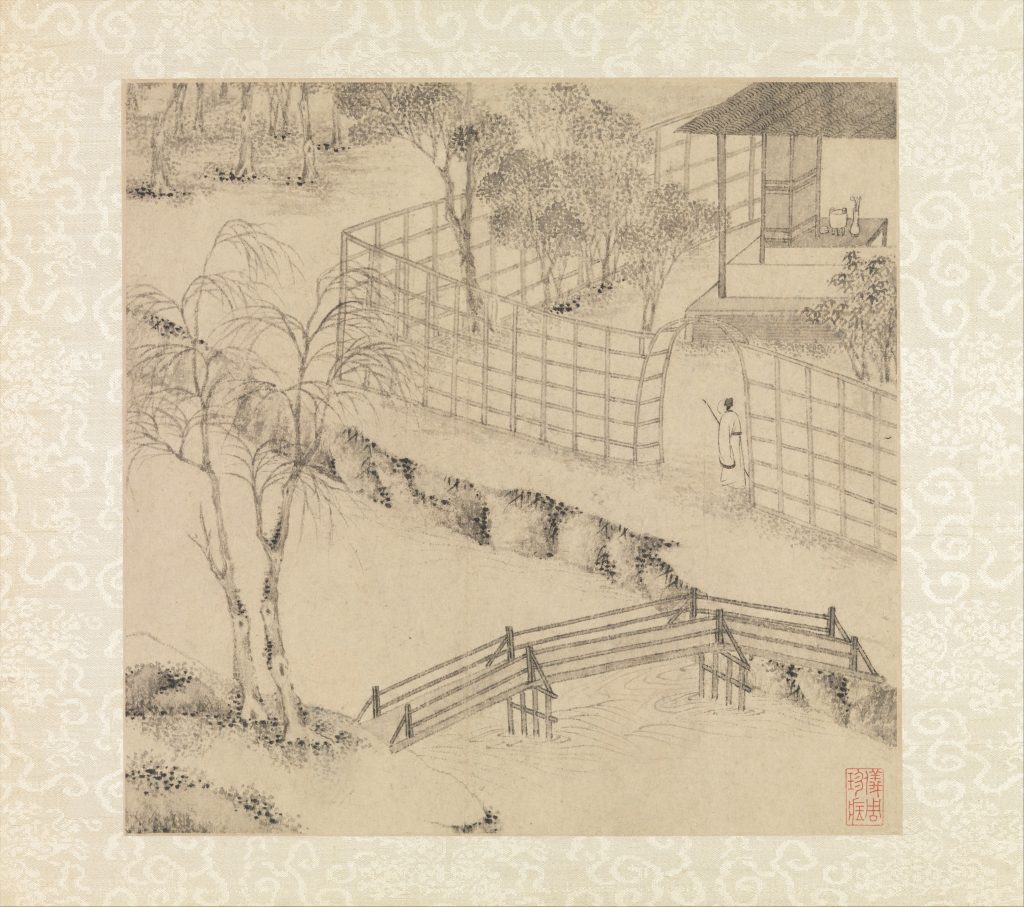
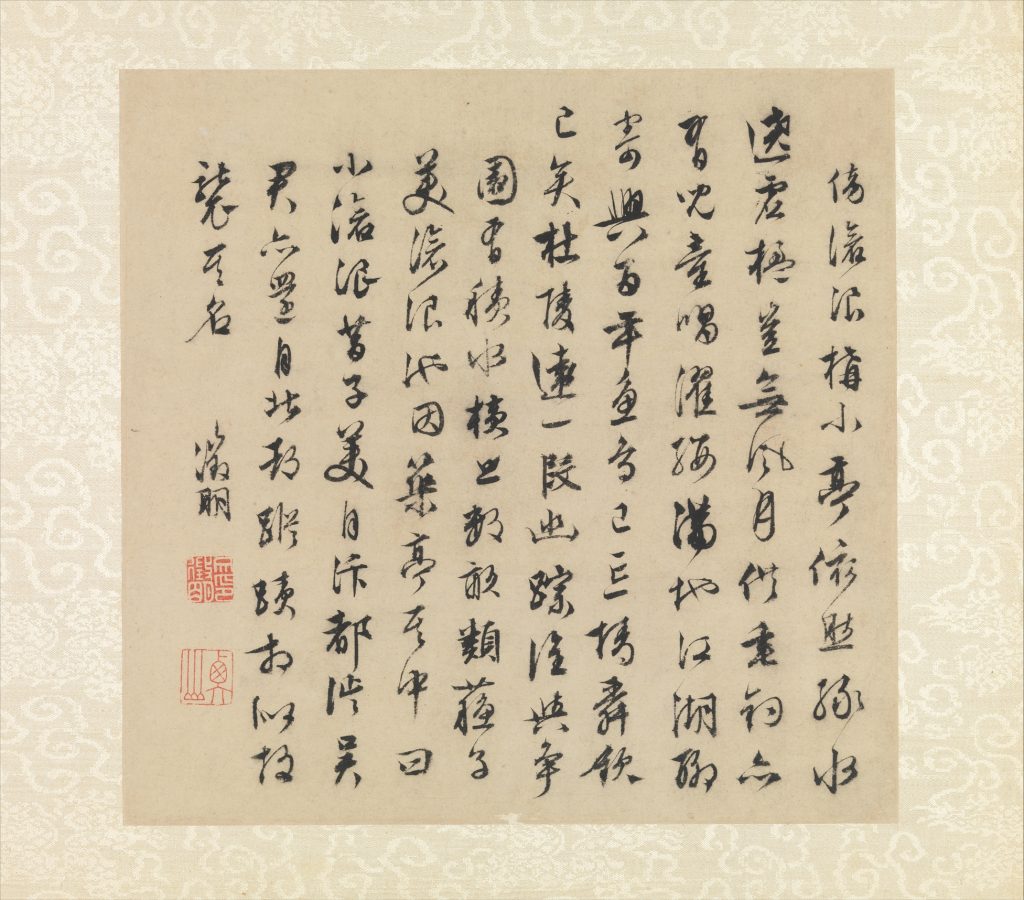
Once a small pavilion was built by the Canglang Pond;
The green water still surrounds its empty railings.
The wind and moon are always here to delight the fishermen,
And boys, too, singing “Wash your cap strings!”
Rivers and lakes fill the whole land, enough for my enjoyment;
For a hundred years the fish and birds have forgotten themselves.
[Su] Shunqin (1008–1048) is dead, Du Ling [Du Fu, 712–770] far away—
As paragons of hermits, who can rival them?
The garden has several mu of water reservoirs, like Su Zimei’s [Su Shunqin] Canglang Pond [in Suzhou]. So a pavilion was built among them, and called the Little Canglang. Formerly Zimei came from the capital, Bian [modern Kaifeng, Henan Province], to Suzhou. You also returned from the northern capital. The name is taken from your comparable journeys. Zhengming
Leaf CC (8 columns in semi-cursive script):
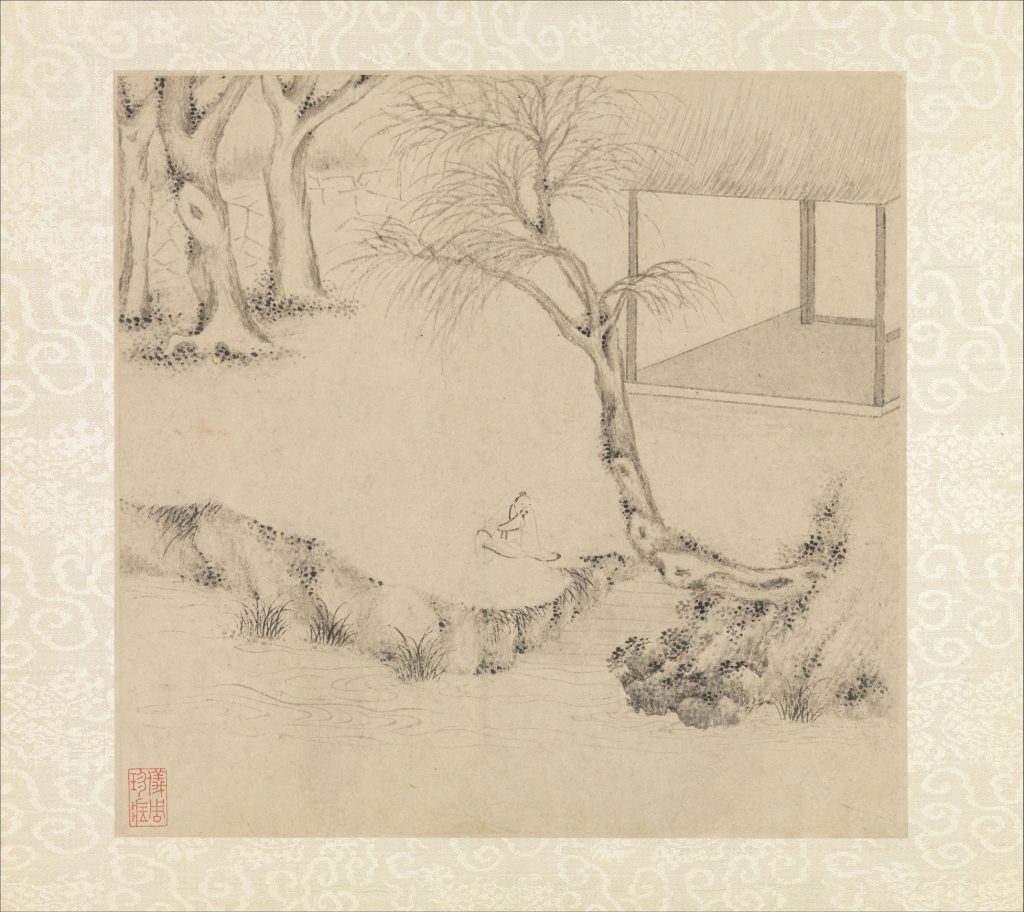

Bamboos planted around the low mound
have grown into a bank circling it.
At the height of the summer, I am startled by autumn’s approach.
So deep is the wood, one cannot tell when it is noon.
In its midst is one who has abandoned the world,
Enjoying himself with a zither and wine.
When a wind stirs, he awakes from inebriation
and sits listening to the rain tapping the bamboo leaves.
The Bamboo Bank is located south of the Peach-blossom Rill and north of the Pavilion of Resting in Rain. It is planted all around with bamboos and is especially quiet and secluded. Zhengming
Leaf DD (9 columns in semi-cursive script):
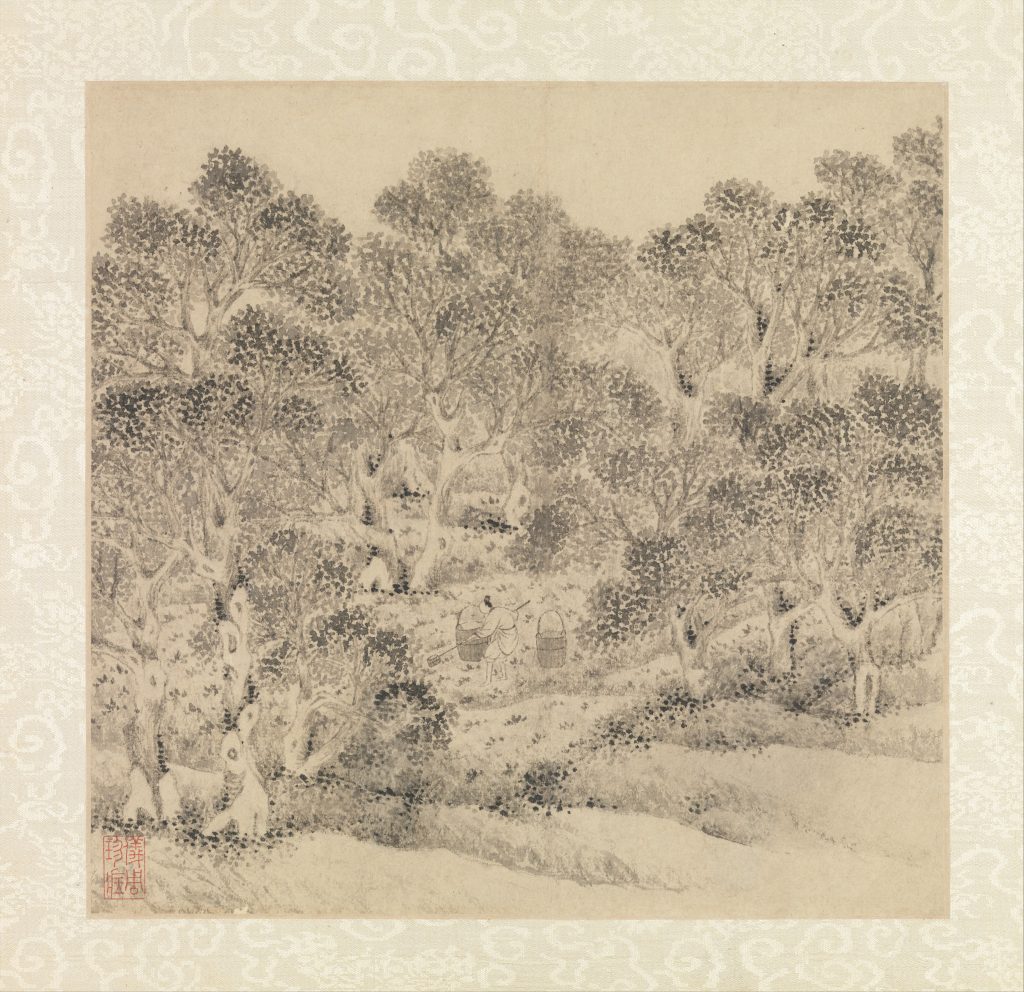
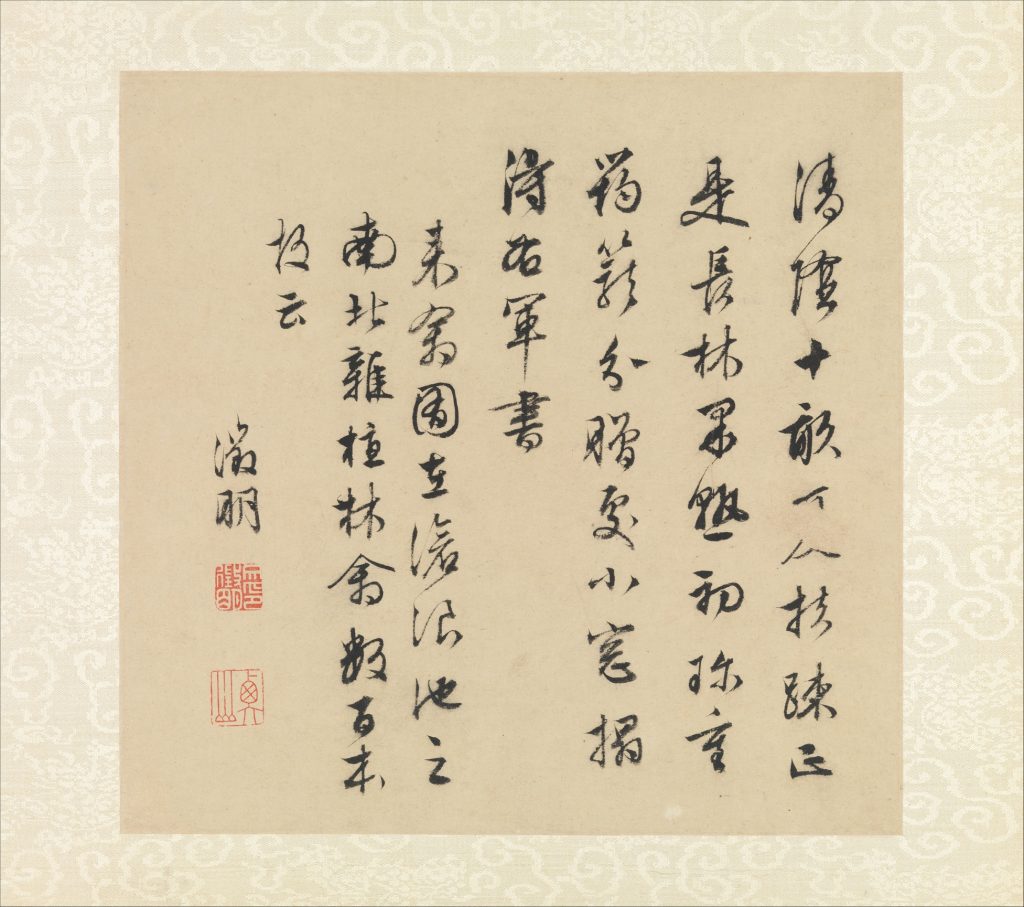
The new banana is over ten feet tall;
After the rain it is clean as though washed.
It does not mind the height of the white wall,
but elegantly matches the zigzag red balustrade.
Autumn sounds enter my pillow and feel cool;
Morning light shines green on the lattice window.
Let no one take to the shears heedlessly;
Leave it until its shade reaches my house.
The Banana Balustrade is to the left of the Pavilion of Resting in Rain. Later, palms were planted to make a suitable shade for the summer months. Zhengming
Leaf EE (9 columns in semi-cursive script):
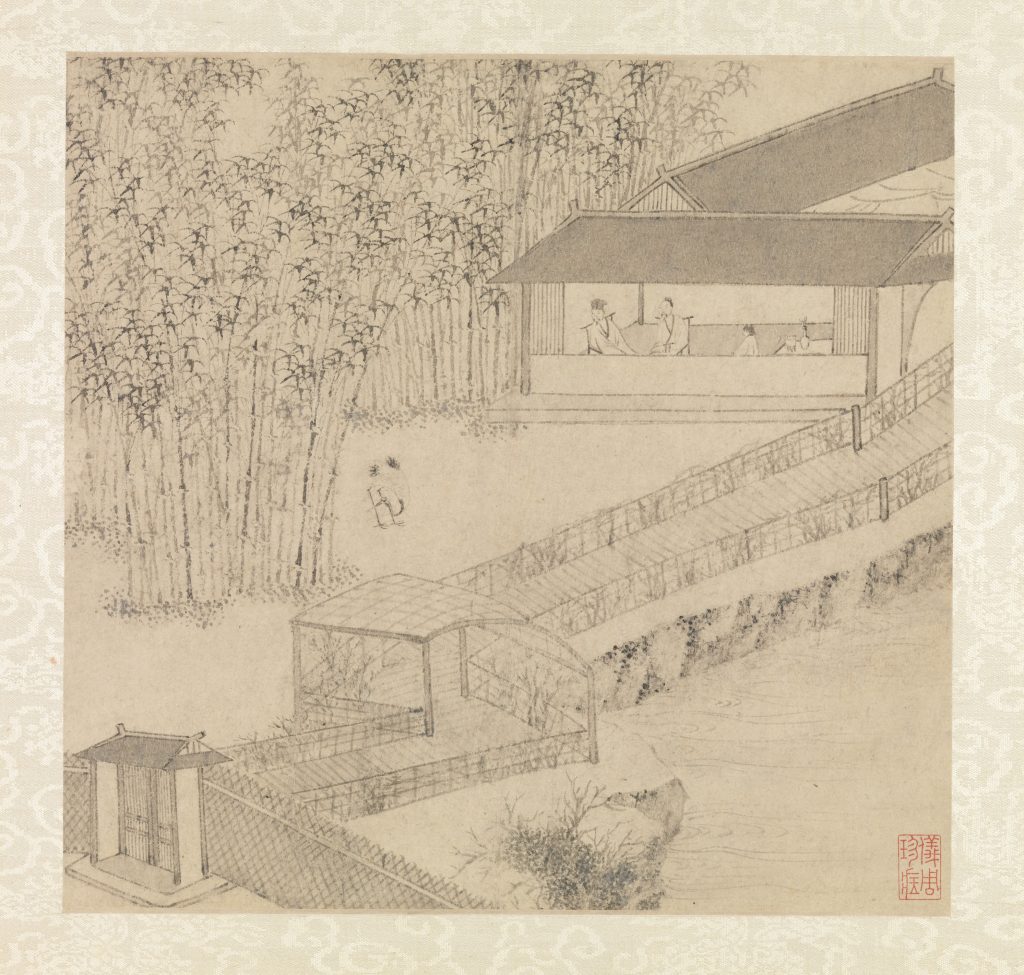
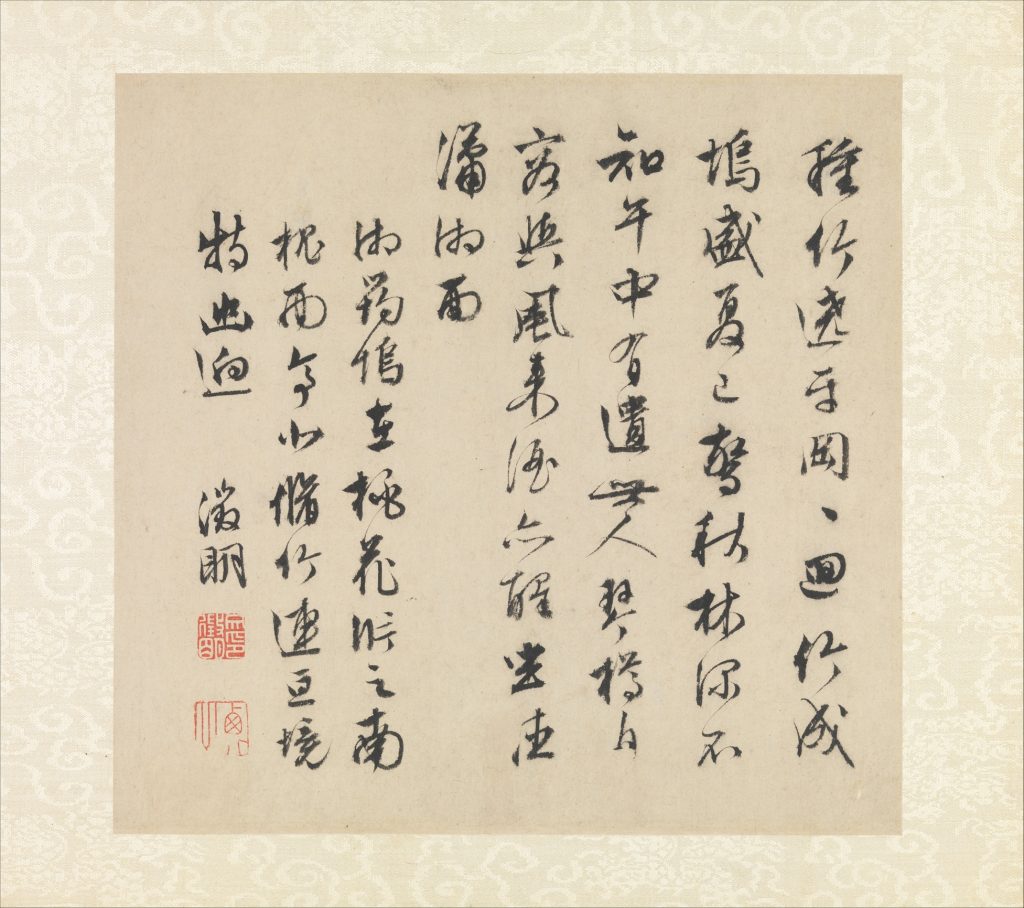
The white stone is clean and dustless,
Stretching along a stream of wild water.
I sit and watch the line rolling,
Taking quiet pleasure in the jadelike ripples.
I enjoy rivers and lakes, away from the world;
Without scheming, I befriend gulls and egrets.
You must know that he who casts the fishing line,
Is not someone who desires fish.
The Fishing Stone is below the Pavilion of Far-reaching Thoughts. At the time of spring brightness, the shade of the willows and the falling flowers make one sit so absorbed as to forget to return. Zhengming
Leaf FF (8 columns in semi-cursive script):
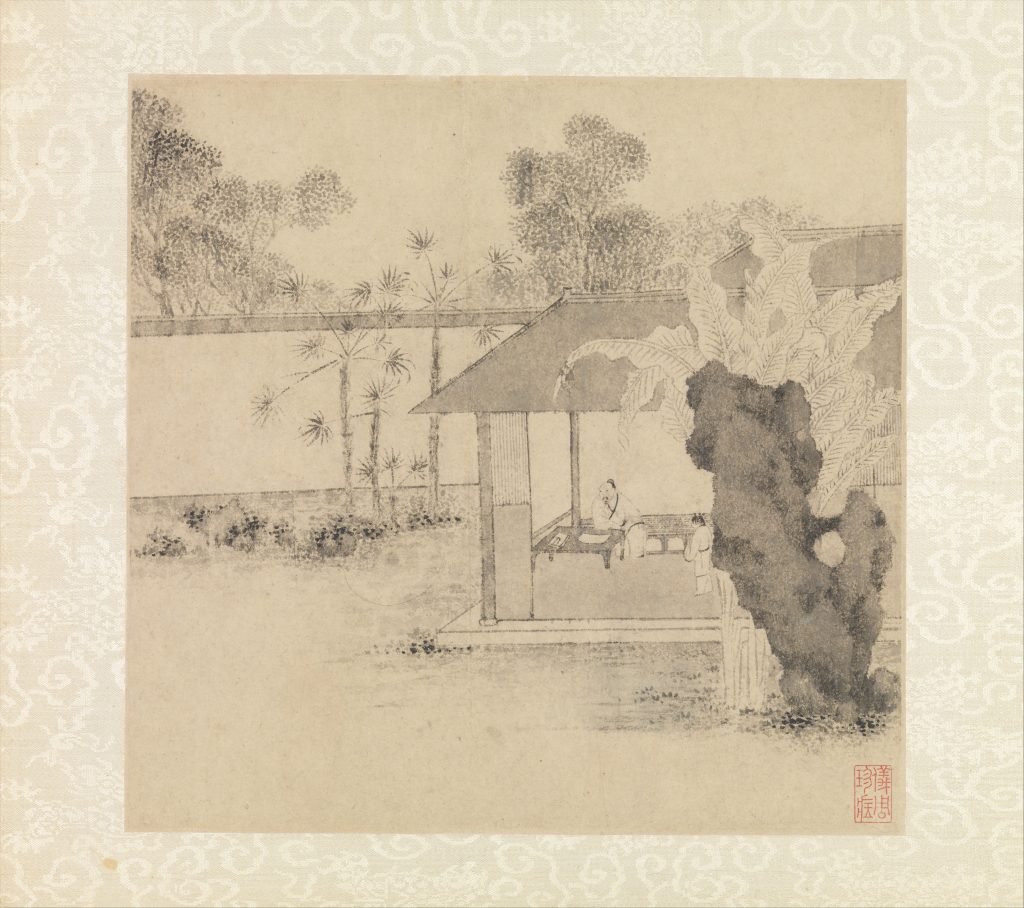
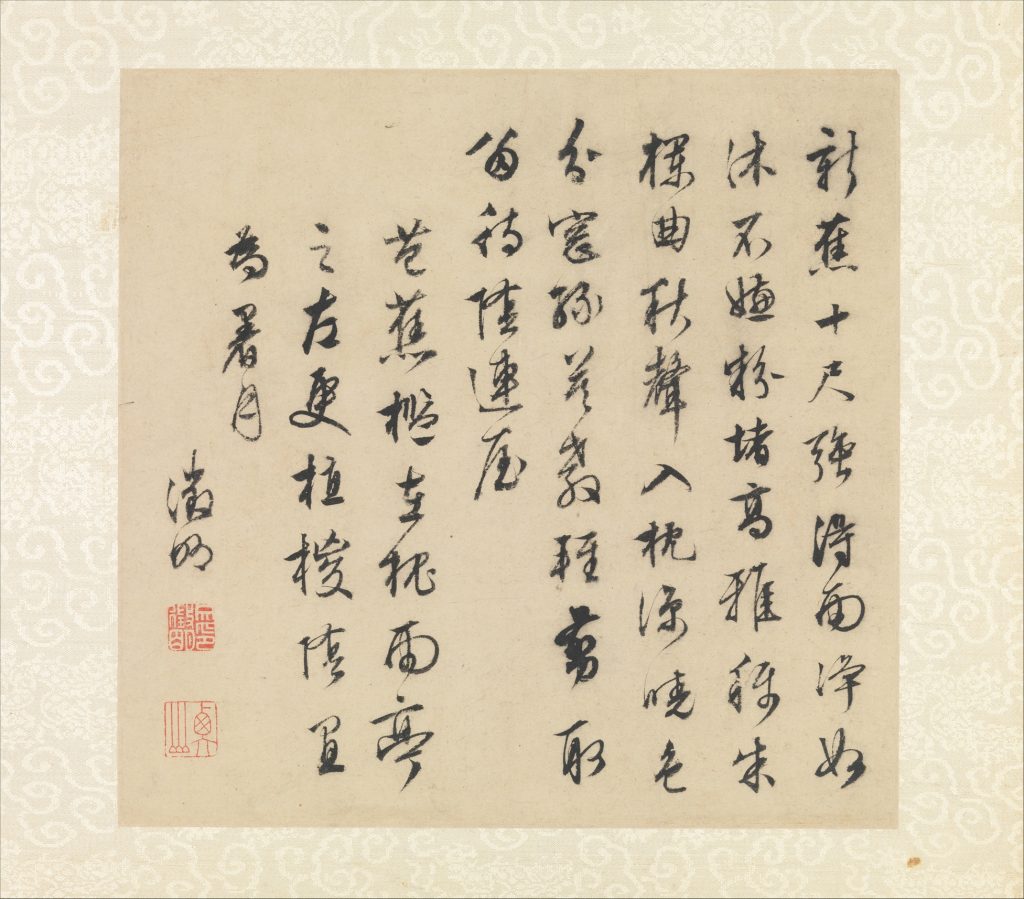
Here in summer a cool shade spreads over ten mu [of land].
It is time when the fruits begin to ripen on the tall apple trees.
Where they are lovingly put into bamboo baskets and given away,
I peruse a rubbing of Youjun’s [Wang Xizhi, ca. 303-ca. 361] calligraphy by a small window.
The Garden of Attracting Birds consists of several hundred apple trees [literally “wood-birds”] planted on the south and north sides of the Canglang Pond.
That’s how [the name came about]. Zhengming
Leaf GG (9 columns in semi-cursive script):


Once I ladled water from a spring in the Fragrant Hills,
which is cool like a pond of jade.[2]
Would you know that as far as Yao is from the Milky Way,[3]
There is another clear jade spring?
With a long rope, I draw water together with the clouds;
In an earthen jar, I boil it with moon inside.
What need of Lu Hongjian [Lu Yu, died 804, a famous tea master]?
At the first sip you yourself can tell.
At Xiangshan in the capital there is a Jade Spring, where the Master used to ladle the water and relish its subtle sweetness. He therefore called himself Yuquan Shanren [Hermit of the Jade Spring]. When he struck a spring in the southeast corner of the garden and found its water no less sweet and suitable for tea than that of the Jade Spring, he adopted the name to show that he would not forget. Zhengming
Leaf HH (8 columns in semi-cursive script):
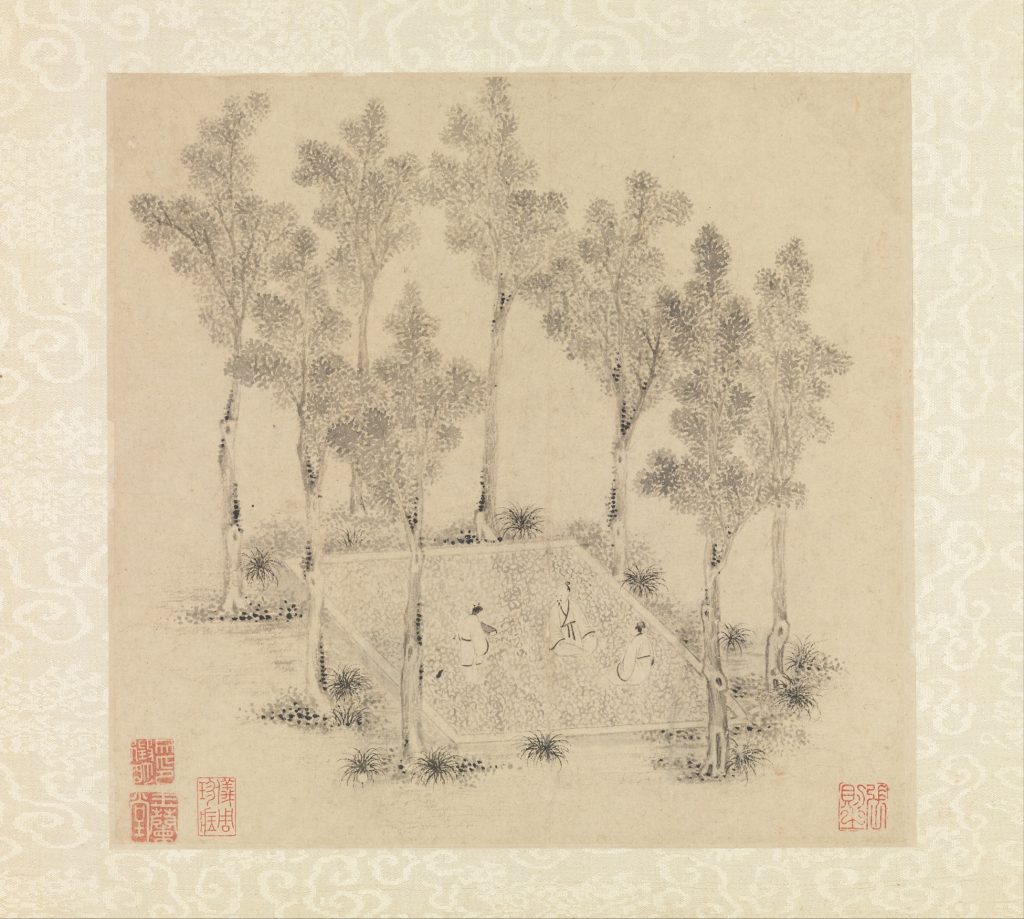
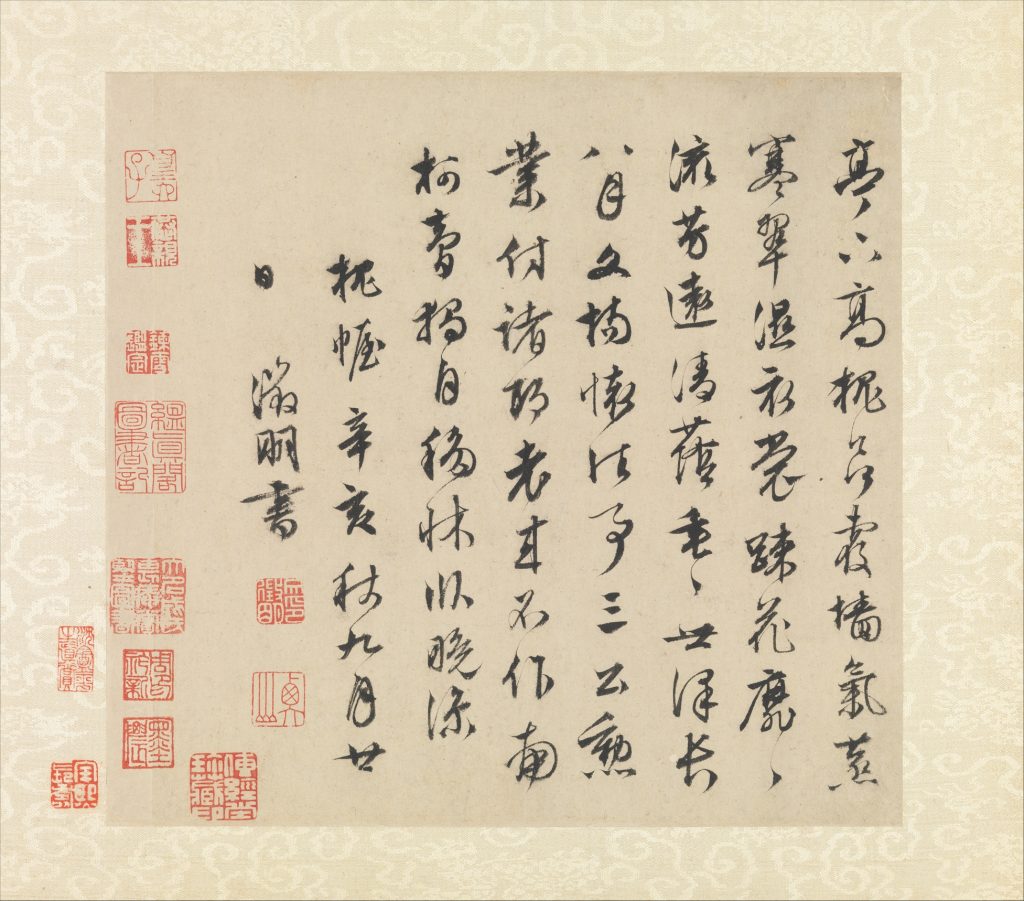
Near the pavilion tall locust trees hang over the wall;
Mist around the cool green wets my clothes.
Sparse flowers are wilting, but their fragrance will endure.
The cool shade falls all around, of lasting benefit to the world.
During the civil service examinations in the eighth month, the past is recalled;
Glorious accomplishment in officialdom is entrusted to the young candidates.
Since I became old, I have no longer had such dreams;
Alone I move my bed to recline in the cool of the evening.
The Locust Tree Enclosure. Written by Zhengming on the twentieth day of the ninth month in the autumn of the xinhai year [October 19, 1551].
Current State of | Estado actual de The Garden of the Inept Administrator (Demolished the original design |Demolido el proyecto original)
